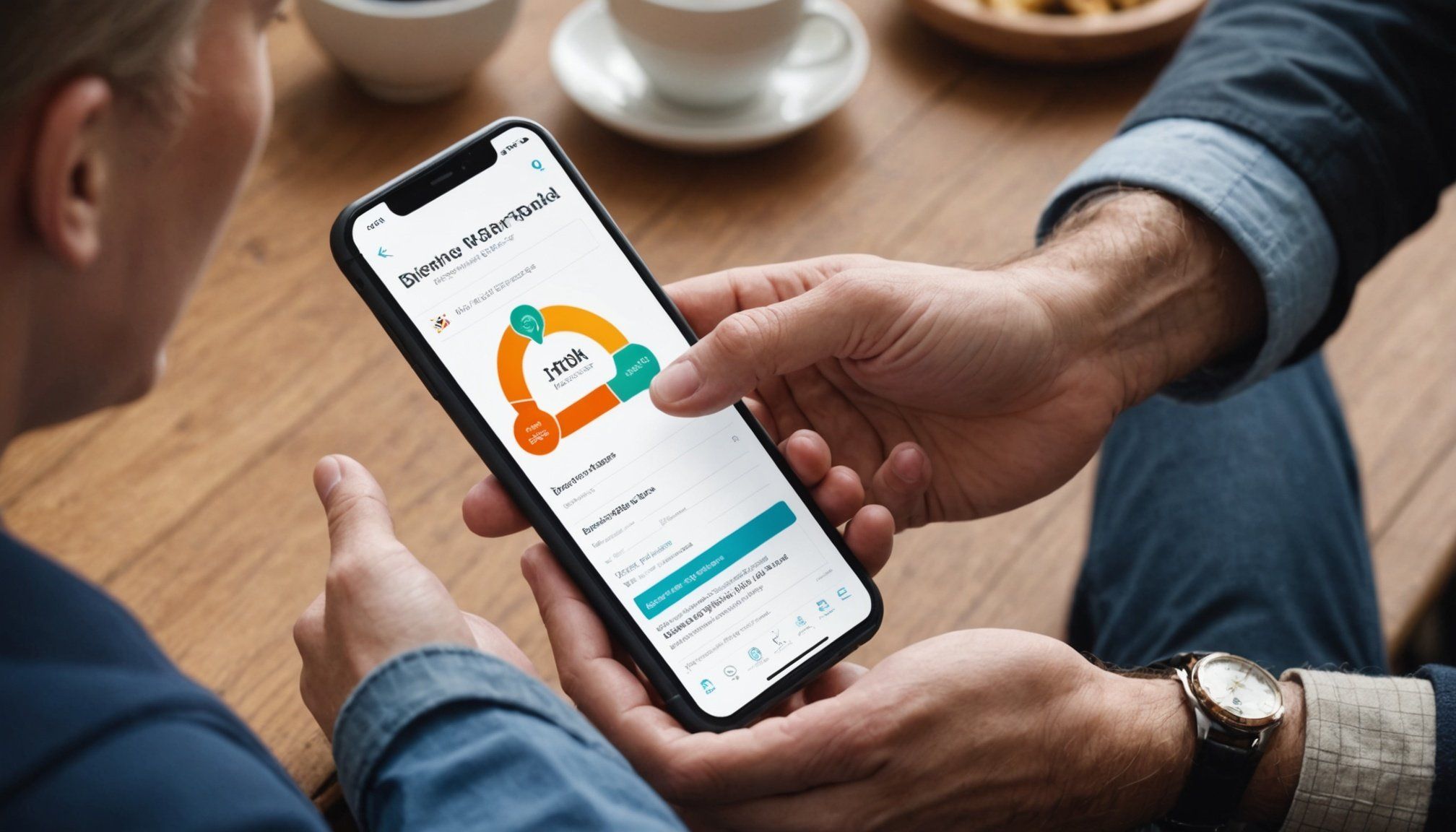Overview of Mobile App Strategies for Nonprofits
In today’s digital landscape, mobile app strategies have become pivotal for boosting nonprofit engagement. As technology evolves, UK-based nonprofits increasingly leverage mobile applications to foster deeper connections with donors and volunteers. These apps serve as powerful tools for enhancing outreach and maintaining robust relationships with supporters, ultimately contributing to the nonprofit’s mission.
Several trends in mobile application utilization have emerged across UK nonprofits. Organizations are incorporating features that allow for seamless donor relationships, such as push notifications for event updates and direct donation links. Successful implementations often showcase a strong alignment between the app’s functionality and the nonprofit’s goals, thus driving impact.
This might interest you : Innovative Virtual Events to Skyrocket Sales for UK Indie Bookstores
Nonprofit organizations that have adopted these strategies generally report positive outcomes. For example, apps incorporating user analytics can offer personalized content, enhancing user engagement and satisfaction. Furthermore, nonprofits that effectively use mobile apps tend to experience increased donation rates and volunteer participation. This demonstrates the critical role of mobile applications in engaging supporters meaningfully and efficiently.
Understanding and adapting to these trends allows nonprofits to stay relevant and innovative, securing sustainable engagement with their diverse supporter base.
Also to read : Transforming UK Retail: Augmented Reality Tactics to Boost In-Store Promotions
Key Features of Effective Nonprofit Mobile Apps
In the digital age, crafting user-friendly mobile apps is essential for nonprofits seeking to boost donor engagement. A seamless and intuitive interface plays a pivotal role in enhancing the donor experience, ensuring users can navigate the app effortlessly to maximize mobile usability. Effective nonprofit apps typically incorporate critical features such as donation processing, event management, and impact tracking. These functionalities not only simplify donor interactions but also enable organizations to efficiently manage and showcase their efforts.
Another vital aspect is the personalization of content within the app. By offering tailored experiences, nonprofits can cater to individual donor preferences, which likely enhances overall engagement and commitment. Features that allow for personalised notifications, recommendations based on past involvement, and insights into the impact of donations help strengthen relationships.
To ensure success, nonprofits should look into integrating tools that facilitate direct communication and feedback from donors. This continuous dialogue allows for improvements in app features and paves the way for adapting strategies to better serve their donor community. Ultimately, focusing on these elements drives sustainable involvement and support for the nonprofit’s mission.
Case Studies of Successful Mobile App Implementation
In the nonprofit sector, case studies provide invaluable insights into how mobile apps can significantly amplify impact. The examination of successful ventures highlights the transformative power of mobile technology.
Case Study 1: A UK Nonprofit Driving Engagement
A renowned UK nonprofit exemplified success by leveraging mobile apps to enhance donor engagement. By integrating social media sharing and real-time project updates, they cultivated a vibrant online community. The app’s analytics dashboard offered insights into donor behaviour, thereby enabling the organisation to tailor content to specific interests.
Case Study 2: Innovative Use of Technology
Another UK-based organisation pushed innovation by using augmented reality (AR) in their app. This immersive feature allowed donors to experience the impact of their contributions first-hand, significantly increasing user retention and satisfaction.
Case Study 3: Lessons Learned and Best Practices
Reflecting on these implementations, common challenges surfaced, particularly in mobile usability and resource allocation. These nonprofits overcame obstacles through regular donor feedback and iterative development. The focus remained on creating meaningful donor relationships through user-centred design. These case studies serve as blueprints for others in the sector.
The Concept of Donor Bonds in the Digital Age
In the nonprofit sector, the concept of donor bonds has become crucial for maintaining enduring relationships. These bonds represent the lasting connections between nonprofits and donors, fostering loyalty and continuous support. As digital engagement becomes more prevalent, mobile apps offer an innovative way to solidify these relationships. By using apps for relationship building, nonprofits can create personalized experiences that resonate with individual donor needs.
To strengthen donor bonds, mobile apps provide an interface for consistent engagement. Features such as push notifications keep donors informed about ongoing projects and achievements. This not only nurtures a sense of involvement but also enhances the overall digital engagement by making donors feel integral to the nonprofit’s mission. Additionally, mobile apps allow for seamless communication channels, offering a platform for feedback and dialogue, which is vital for reinforcing trust and transparency.
Strategies to enhance donor communication include integrating social media sharing options and facilitating easy access to donation histories. By leveraging technology to maintain open, meaningful interactions, nonprofits are well-positioned to reinforce donor loyalty and encourage sustained support. In doing so, they ensure that their mission resonates deeply with those who contribute.
Challenges and Solutions for UK Nonprofits
The pathway to integrating mobile app strategies for UK nonprofits is often fraught with challenges, yet solutions are readily available to pave the way for success. Nonprofit challenges primarily revolve around funding constraints and limited technical resources, leading to difficulties in app development and maintenance.
To mitigate these hurdles, organizations can employ specific mobile app solutions tailored to their needs. For instance, forming collaborations with tech firms offers access to expertise and resources otherwise unavailable. Additionally, prioritizing sector-specific needs ensures that resources are allocated efficiently, focusing on the most impactful app features.
Facing resource limitations head-on, many nonprofits turn to innovative solutions. Employing open-source software can substantially reduce development costs. Meanwhile, volunteer-based tech support provides a cost-effective way to maintain the app. Enhancing app accessibility and effectiveness can also involve utilizing community feedback, ensuring the platform remains user-centric.
Ultimately, addressing these challenges with strategic solutions empowers UK nonprofits to harness the full potential of mobile technology, effectively engaging their audience and advancing their missions.
Implementing Mobile App Strategies: Best Practices
Crafting a mobile app that resonates with users is crucial for nonprofits. App implementation should begin with clear objectives. Align the app’s features with the organization’s mission to ensure coherence and impact.
Successful nonprofits prioritize user engagement. Gathering donor feedback proves invaluable. This input helps refine app features, ensuring they meet user needs. Adaptive design, driven by user insights, enhances app effectiveness. This ongoing dialogue fosters a continuous evolution of the app, keeping it relevant and user-friendly.
Once the app is optimized, focus shifts to marketing strategies. Raising awareness about the app among supporters is essential. Utilize multiple channels, from social media to email newsletters, to reach a broad audience. Create incentives for first-time users, such as exclusive content or thank-you messages, to encourage app downloads and regular usage.
In these efforts, nonprofits should emphasize the value the app offers. Highlight how it simplifies engagement, aids in tracking impact, and enhances donor experiences. By showcasing tangible benefits, organizations can cultivate robust donor relationships and heightened participation through strategic app use.
Future Trends in Mobile Apps for Nonprofits
As the digital landscape evolves, future trends in mobile technology shape how nonprofits interact with their communities. Staying ahead of these trends is crucial for organisations aiming to enhance donor engagement and meet changing expectations.
Emerging technologies such as artificial intelligence (AI) and machine learning (ML) are revolutionising the nonprofit sector. By leveraging AI and ML, mobile apps can offer more personalised experiences, tailoring communication and insights to donor behaviors. This leads to more meaningful interactions and potentially higher engagement levels. These technologies also help automate tasks, allowing nonprofits to focus more resources on their missions.
Furthermore, blockchain is emerging as a tool for greater transparency and trust. Integrating blockchain in donation processes ensures data integrity and enhances donor trust, making the donation experience more secure.
Preparations for the future involve embracing these technologies and continually assessing donor preferences. Flexibility is key; nonprofits need to adapt their strategies and platforms quickly to stay relevant. By prioritising adaptability and innovation, nonprofits can maintain robust donor relationships in an increasingly digital world. This proactive approach will position them to capitalise on technological advancements effectively.






